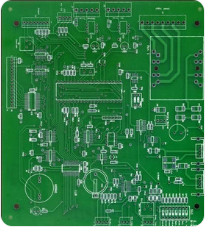The following is mainly to take everyone to understand the PCB processing and manufacturing industry market and future development trends, and interested partners hurry up and learn about it.
Due to the widespread use of printed circuit boards, even minor changes in consumer trends and emerging technologies will have an impact on the PCB market, including its use and manufacturing methods.
Although there may be more time, the following four major technological trends are expected to maintain the priority position of the PCB market for a long time and lead the entire PCB industry to different development directions.
1. High-density interconnection and miniaturization
When the computer was first invented, some people might have spent their entire lives working on a computer that occupies an entire wall. Nowadays, even the computing power of calculator watches is orders of magnitude greater than those of behemoths, let alone smartphones.
At present, the entire manufacturing industry is in the vision of the whirlwind of innovation, most of which serve miniaturization. Our computers are getting smaller and smaller, and other things are getting smaller and smaller.

In the entire consumer group, people seem to be gradually inclined to smaller electronic products. Miniaturization means that we can build smaller, more efficient houses and control them. And cheaper, more efficient cars and so on.
Since PCBs are very important basic components in electronic products, PCBs must also unremittingly pursue miniaturization.
Especially in the PCB market, this means the use of high-density interconnect technology. The further development of HDI technology will further reduce the PCB size, and more and more industries and products will be touched in the process.
2. Excellent materials and green manufacturing
Today, the PCB industry is being affected by climate and social pressures. The PCB manufacturing process needs to keep up with the trend of the times and evolve towards sustainable development.
In fact, PCB manufacturers have always been a hot topic at the crossroads of development and environmental protection. For example, the introduction of lead-free solder requires a higher energy consumption manufacturing process. Since then, the industry was forced to find a new balance point.
In other respects, PCB has always been in the position of... Traditionally, PCBs are made of glass fibers, and most people consider them to be relatively environmentally friendly materials. Further progress may allow glass fibers to be replaced by materials more suitable for high data transmission rates, such as resin-coated copper and liquid crystal polymers.
As all types of manufacturing efforts continue to adjust their footprints to adapt to the ever-changing earth, the link between social needs and production and commercial convenience will become a new norm.
PCB processing
3. Wearable devices and ubiquitous computing
We briefly introduced the basic principles of PCB technology and how they can achieve higher complexity on thinner circuit boards. Now we put this concept into practice. PCBs are reducing thickness and increasing functions every year. Now we have many practical applications of small circuit boards.
In the past few decades, consumer electronic products as a whole have been an important driving force for the manufacture and use of PCBs. Now wearable devices have entered this field and become reliable consumer products, and related PCBs will also appear.
Like smartphones, wearable technologies also require printed circuit boards, but they go further. They pay more attention to design efficiency than the past technology.
4. Health technology and public supervision
The introduction of modern digital technology into medicine is one of the great developments of the modern human calendar. Today's technology means that we can safely store patient records in the cloud and manage them through apps and smartphones.
However, the rapid development of medical technology has affected PCB and vice versa in some very interesting ways. The car camera is a new development, and even the fidelity camera can be fixed to the PCB itself. The medical significance is huge: When the camera needs to be inserted into the human body, swallowed by the human body, or introduced into the human body in other ways, the smaller the camera, the better. Now some car cameras are small enough to swallow.
As for public supervision, on-board cameras and smaller PCBs can also help. For example, dash cams and vest cameras have shown useful functions in reducing illegal activities, and many consumer technologies have emerged to meet this demand. Many popular mobile accessory companies are exploring ways to provide drivers with increasingly inconspicuous dashboard cameras, including and including hubs that connect to interact with your phone while you are driving.
New consumer technologies, medical advancements, manufacturing breakthroughs and powerful trends of the times are fascinating. Incredibly, PCB has the opportunity to become the core of all this.
The PCB industry has broad development prospects and will penetrate into more areas in the future!